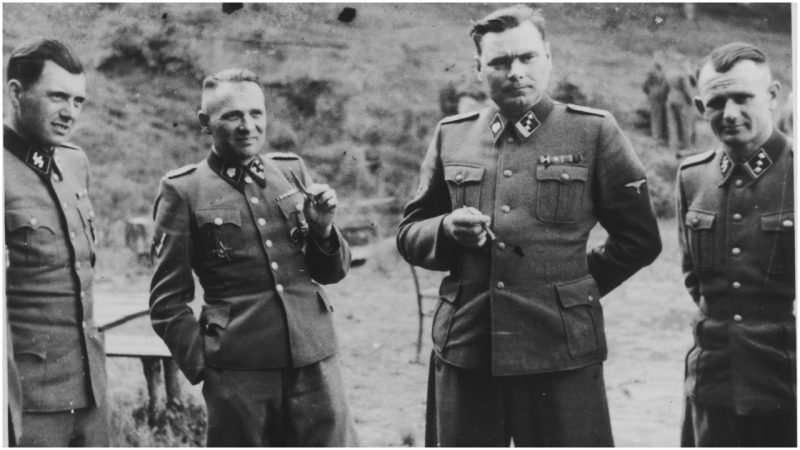“When in the summer of 1941, Hitler gave me the order to prepare installations at Auschwitz where mass exterminations could take place, and personally to carry out these exterminations, I did not have the slightest idea of their scale or consequences.
“It was indeed an extraordinary and monstrous order. Nevertheless, the reasons behind the extermination program seemed to me right. I did not reflect on it at the time: I had been given an order, and I had to carry it out. Whether this mass extermination of the Jews was necessary or not was something on which I could not allow myself to form an opinion, for I lacked the necessary breadth of view.”
As quoted in Commandant of Auschwitz: The Autobiography of Rudolf Hoess, the gruesome text written by Hoess at the behest of his Polish jailors during his imprisonment after WWII. In his view, the mass genocide of the Jewish people was merely another task that had to be completed—he was simply following orders, as he so very clearly stated so many times during his captivity.
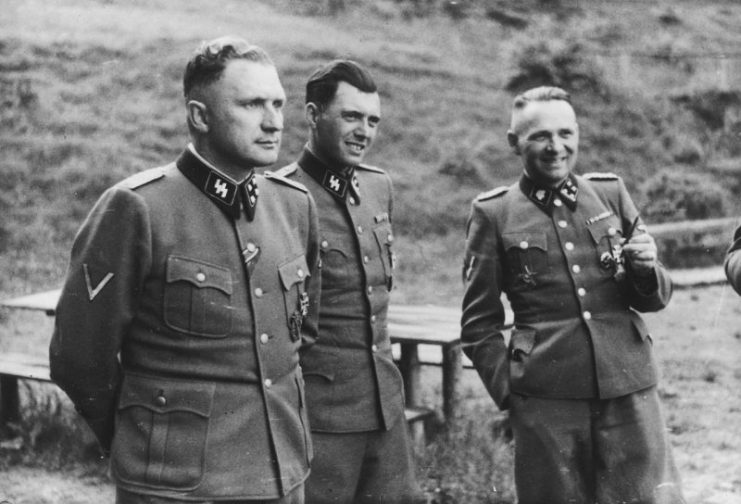
But Rudolf Hoess was no Amon Goeth, the Nazi war criminal many of us know from his portrayal in the movie Schindler’s List. There were no sadistic shootings with a rifle from the commandant’s balcony at Auschwitz. Hoess did not even get an infamous nickname like his dastardly colleague who was known among his inmates at Plaszów concentration camp as the “Butcher of Plaszów.”
He was simply Commandant Rudolf Hoess, and he always got the job done. And that he did with industrial precision.
It was almost like he was running a factory, and what he manufactured—or, better said, destroyed—were nothing more than mere products to him. In effect, he was a quota-man who did his utmost to achieve what he had been tasked to achieve.
There was no time or, in his view, a reason to question his actions. He had been given an order from his superiors, so who was he to challenge wiser men.
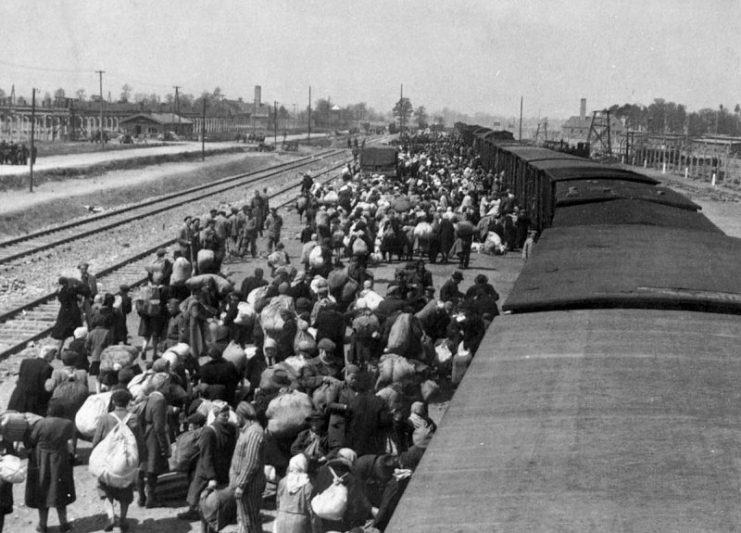
Hoess hugged and kissed his children before going to work.
The concentration camp prisoners who worked as gardeners, cooks or nurses in the Hoess household confirmed his family side. “He loved the kids,” said Danuta Rzempiel, a prisoner at Auschwitz. “He liked to lie down on the sofa with them, he kissed them, hugged them and talked to them nicely.”
“Papa was two people,” explained his daughter, Ingebrigitt Hoess, many years later. To this day, she has trouble understanding how any one person was able be two entirely different people. At home, he was a loving father and husband. The moment he stepped out of the door he became the cold-hearted organizer without a conscience.
The shocking fact is that the Commandant of Auschwitz never did show any degree of remorse for his actions, as could be later seen and heard during the International Military Tribunal at Nuremberg on April 5, 1946. On the contrary, there was even a degree of pride lacing his voice as he explained his role as Commandant of Auschwitz-Birkenau.
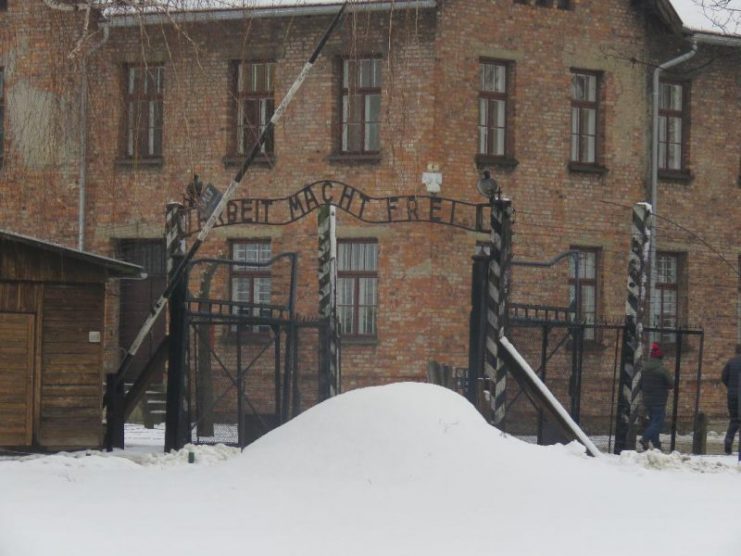
In his opinion, he had done nothing wrong. Orders were orders and they needed to be followed without question—it was how Hoess was brought up.
At the peak of its performance, the Auschwitz-Birkenau death camp had the facilities to “get rid of ten thousand people in 24 hours,” as SS-Obersturmbannführer Rudolf Hoess testified during the aforementioned trials.
Listening to such a statistical and matter-of-fact explanation in relation to human lives is enough to let shivers run down any person’s spine. You would never imagine that such a man was a loving father and husband whom contemporaries described as a mild-mannered man with unimpeachable moral fiber.
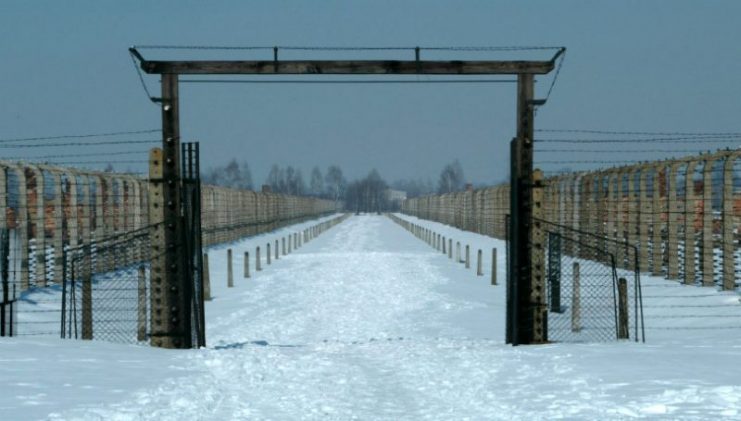
A ghastly tale from the Commandant of Auschwitz himself.
“Technically it wasn’t so hard—it would not have been hard to exterminate even greater numbers…. The killing itself took the least time. You could dispose of 2,000 head in half an hour, but it was the burning that took all the time.
“The killing was easy; you didn’t even need guards to drive them into the chambers; they just went in expecting to take showers and, instead of water, we turned on poison gas. The whole thing went very quickly.”

This declaration at Nuremberg, of course, invited the accusation from the Allied prosecutor that Hoess had been responsible for the deaths of some 3.5 million souls. Hoess at first looked surprised, impressed, and then confused. He took a moment to think before he explained what he thought was the correct figure. He was a precise man, and he would never deign to inflate his achievements.
“No. Only two and one half million—the rest died from disease and starvation,” came the Commandant of Auschwitz’s reply in its habitual apathetic tone of voice.
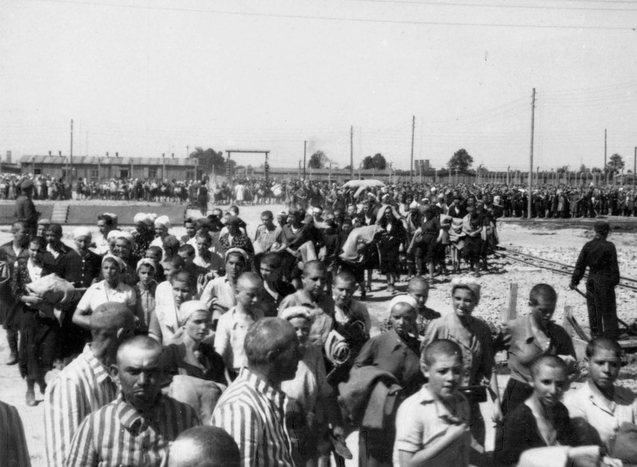
The matter-of-fact manner in which the former commandant continued to describe his duties shocked all of the people present at the trials. Even the likes of Herman Goering, who sat in the stands among his fellow accused, appeared shaken.
Rudolf Hoess, a short while later when he was a prisoner at Krakow in Poland, revised the figure of 2.5 million deaths to 1,130,000. In his essay on the Final Solution in Auschwitz, he made an effort to list the deaths as accurately as possible to defend his case:
“I myself never knew the total number, and I have nothing to help me arrive at an estimate. I can only remember the figures involved in the larger actions, which were repeated to me by Eichmann or his deputies: From Upper Silesia and the General Gouvernement 250,000, Germany and Theresienstadt 100,000, Holland 95,000, Belgium 20,000, France 110,000, Greece 65,000, Hungary 400,000, and Slovakia 90,000.”
He also noted, “I can no longer remember the figures for the smaller actions, but they were insignificant by comparison with the numbers given above. I regard a total of 2.5 million as far too high. Even Auschwitz had limits to its destructive capabilities.”
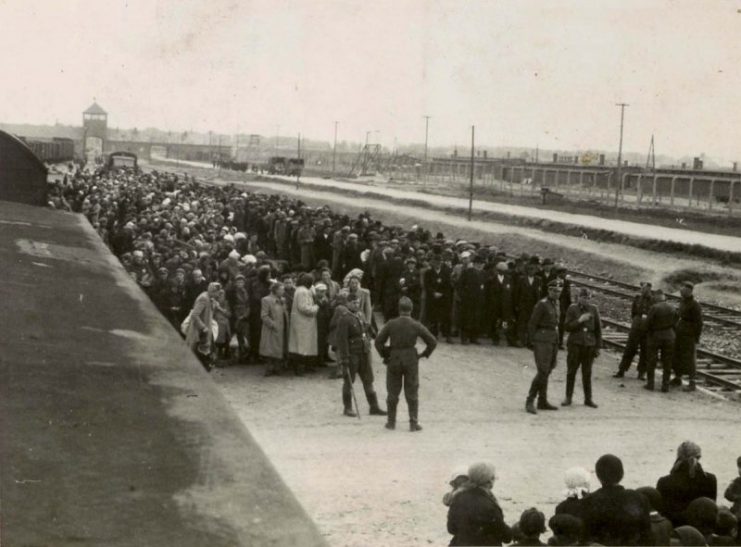
Psychological analysis of a war criminal.
One man tried to find an explanation as to why Rudolf Hoess did what he did and without any remorse or second thought. His name was Gustave Gilbert, the American military psychologist assigned to observe and profile the high-ranking Nazi officials during the Nuremberg Trials. Much of Gilbert’s work is still the subject of study in many universities, particularly in the field of psychology.
His findings during the trials are astounding and frightening as well. In many respects what he learned from Rudolf Hoess, a mere follower in the grand scheme of things, he was also able to assign to many of the other Nazi demagogues.
In reality, they all shared one all-encompassing and defining characteristic: namely, a complete lack of empathy for their fellow human beings.
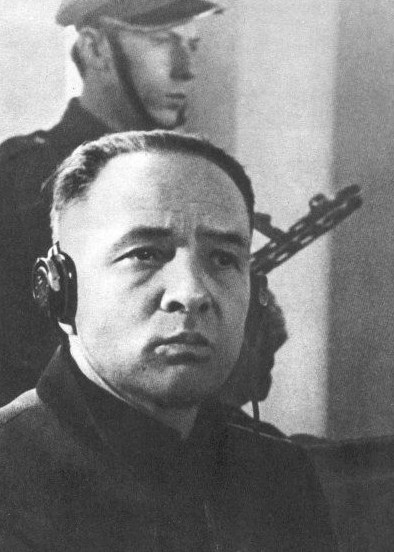
Gustave Gilbert was intrigued in a professional sense after listening to Rudolf Hoess speak during his deposition as a defense witness for Ernst Kaltenbrunner, the highest-ranking member of the SS to face trials after the war. This is what Gilbert wrote:
In all of the discussions, Hoess is quite matter-of-fact and apathetic, shows some belated interest in the enormity of his crime, but gives the impression that it would never have occurred to him if somebody hadn’t asked him. There is too much apathy to leave any suggestion of remorse, and even the prospect of hanging does not unduly stress him. One gets the general impression of a man who is intellectually normal, but with the schizoid apathy, insensitivity and lack of empathy that could hardly be more extreme in a frank psychotic.
But who was Rudolf Hoess really?
Hoess was a technocrat of state terror, but he was not a sadist: “He was a normal person, he made the impression of an honest, quiet, rather taciturn person; he never beat anybody,” said Józef Paczyński, Auschwitz survivor and the Commandant’s barber during an interview with the German NDR.
Rudolf Franz Ferdinand Hoess was born on November 25, 1901 in Baden-Baden, Germany into a strict Catholic family. He had two sisters. He was a lonely child without any friends his own age until he started elementary school.
His father raised him based on a strict set of morals, and he had plans for his only son to become a priest. Hoess had other plans. At age 15, he volunteered to join the army during the First World War.
He ended up serving in Turkey on the front in Mesopotamia and later in Palestine, as well as participating in combat operations against the British Army. At the age of 17, he was promoted to the rank of sergeant, the youngest in the German armed forces, and was decorated with the Iron Cross I. and II. Class.
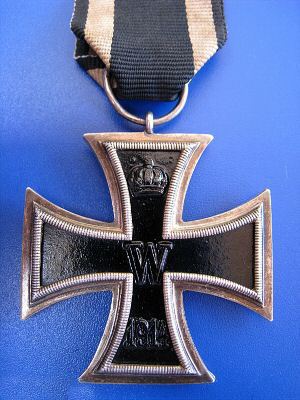
In 1919 Hoess joined the Freikorps Rossbach and participated in various skirmishes in the Baltic and Ruhr areas, and also in Upper Silesia. Shortly after that the young Hoess became despondent, working day jobs and earning a pittance just to survive. He even contemplated committing suicide.
However, when he listened to Adolf Hitler speak in Munich in November 1922, he knew that he had found his messiah—he finally had a calling, and the demagogue and later Fuhrer fueled the young man with new and hateful purpose. He promptly joined the National Socialist German Workers Party as member 3,240.
Hoess soon started to blossom in his role as a Nazi goon when Bormann, the man who would later become Hitler’s private secretary, gave the order to beat Walther Kadow to death. Kadow was suspected of helping the French occupation authorities in the Ruhr by supplying them with information that resulted in the execution of fellow Nazi Albert Leo Schlageter, who had been caught trying to destroy French supply lines.
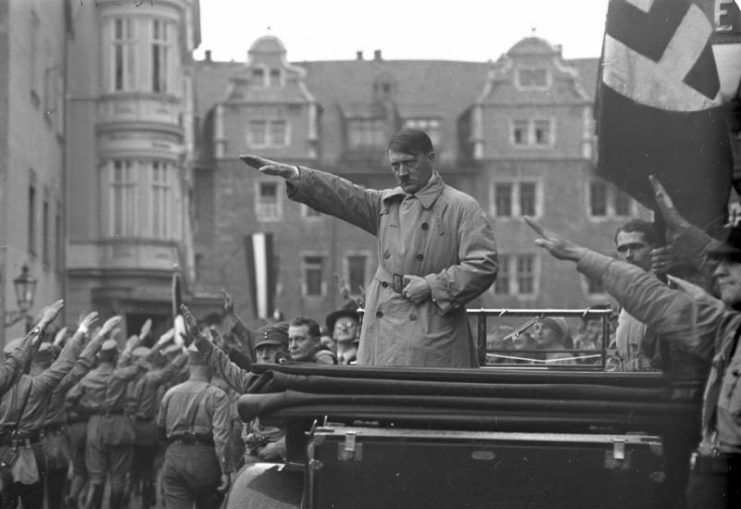
Hoess was arrested as the ringleader in Kadow’s murder and was sentenced on March 15, 1924 to ten years in Brandenburg Prison. His later patron, Martin Bormann, received a year of imprisonment for his role in the death. However, Hoess was released early on July 14, 1928, due to a general amnesty.
In the following years, Hoess was a part of the Artaman League, an anti-urbanization movement which espoused the ideology of a return to the countryside. It was there that he met Hedwig Hensel. He married her on August 17, 1929, and the couple had five children: Ingebrigitt, Klaus, Hans-Rudolf, Heidetraut and Annegret in the period from 1932 to 1943.
Rudolf Hoess’s most significant moment came when he met his soon-to-be idol, Heinrich Himmler. Whatever the head of the SS said became gospel to Hoess. He joined the SS on April 1, 1934, and he would later prefer to hang the portrait of the Reichsführer SS in his office instead of that of Hitler.
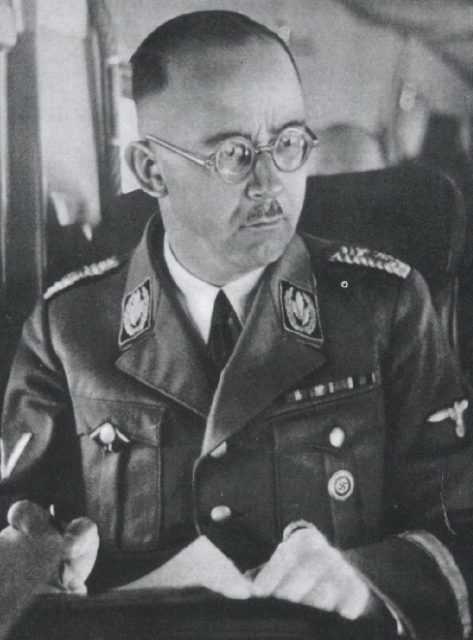
Thus began one of the most infamous military careers in history.
Hoess soon proved himself to be indispensable to Himmler’s plans and the implementation of the final solution. On March 1, 1941, Hoess received the order from Heinrich Himmler to build the Auschwitz extermination camp. The commencement of the “Final Solution of the Jewish Question” had begun in earnest, and Hoess was Hitler’s most willing executioner.
The task was monumental, and Hoess soon realized that shooting the vast numbers of prisoners was not going to be enough. He began experimenting with various gassing methods until finally settling on Zyklon B, which was tested on a group of Soviet prisoners and proved effective.
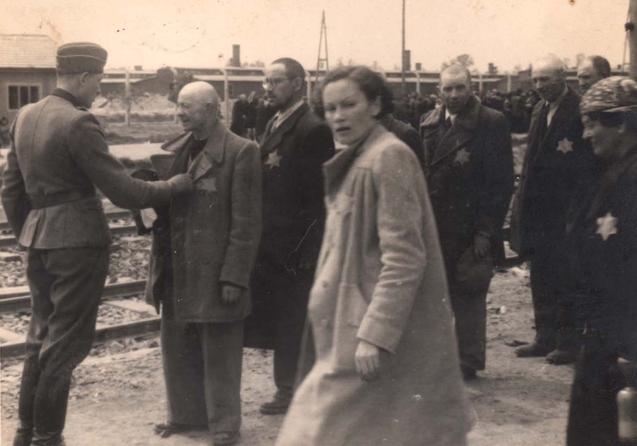
Finally, he was able to exterminate masses of people. He explained that “it took between three to fifteen minutes for people to die… we knew when the people were dead because they stopped screaming.”
Four days before he was executed by hanging on April 16, 1947, on a site located right next to the crematorium at Auschwitz, he wrote the following to the state prosecutor:
My conscience compels me to make the following declaration. In the solitude of my prison cell, I have come to the bitter recognition that I have sinned gravely against humanity. As Commandant of Auschwitz, I was responsible for carrying out part of the cruel plans of the “Third Reich” for human destruction. In so doing I have inflicted terrible wounds on humanity. I caused unspeakable suffering for the Polish people in particular. I am to pay for this with my life. May the Lord God forgive one day what I have done.
The words show some form of remorse, and yet, his actions demonstrated vileness and absence of empathy. In the modern sense, he was a sociopath of the most epic kind.
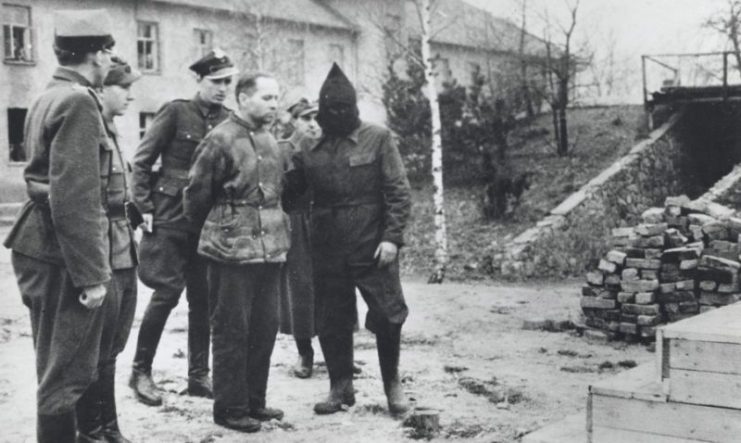
Incidents such as Hoess’ affair with political prisoner Eleonore Hodys show his crassness. When she gave testimony after the war, she explained that the moment he found out she had become pregnant, he gave the order for her to be locked up in a standing-only arrest cell. She feared that she too would be gassed. Instead, she was taken to the Auschwitz hospital and told to have an abortion.
Two things stand out the most in Hoess’s infamous career. For one, the manner in which he coordinated the mass murder of 430,000 Hungarian Jews in 56 days starting on May 8, 1944.
The operation even bore his name and was called Operation Hoess. The scale of it was too much for even Auschwitz, and bodies were burned in pits because the crematoria were overflowing.
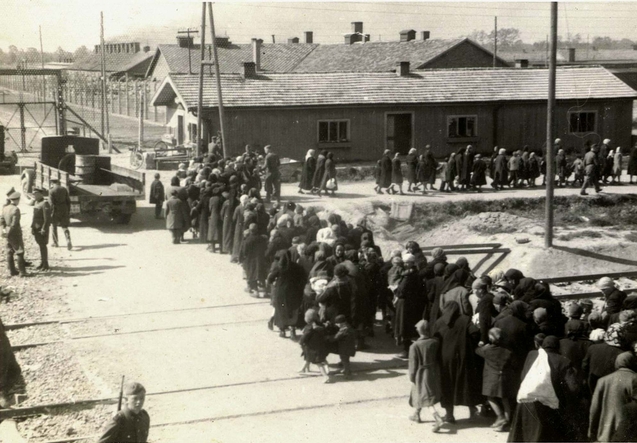
The other thing was Hoess’ arrest at the hands of the British when they finally caught up with him close to Flensburg in northern Germany. The death dealer of Auschwitz was then using the alias of Franz Lang and working as a farm hand.
Ultimately, it was his wife who betrayed him to save her eldest son Klaus from harsh questioning. When British Captain Hanns Alexander, a Jew originally from Berlin, asked Hoess who he was, Hoess attempted to hide his identity, but his wedding ring with the inscription “Rudolf and Hedwig” on the inside gave him away.
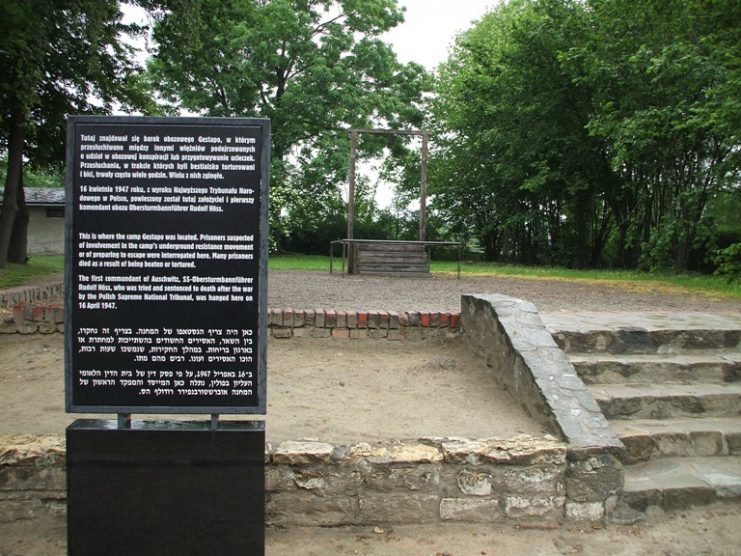
Read another story from us: The Largely Overlooked Story of How Himmler “Saved” Thousands of Jews
Death
He did not say a word as he stood on the gibbet. He treated his own death with same icy resolve as he had done with millions of others. The site where Commandant Rudolf Hoess was hanged on a short-drop gallows bears the following inscription:
“This is where the camp Gestapo was located. Prisoners suspected of involvement in the camp’s underground resistance movement or of preparing to escape were interrogated here. Many prisoners died as a result of being beaten or tortured. The first commandant of Auschwitz, SS-Obersturmbannführer Rudolf Hoess, who was tried and sentenced to death after the war by the Polish Supreme National Tribunal, was hanged here on 16 April 1947.”
